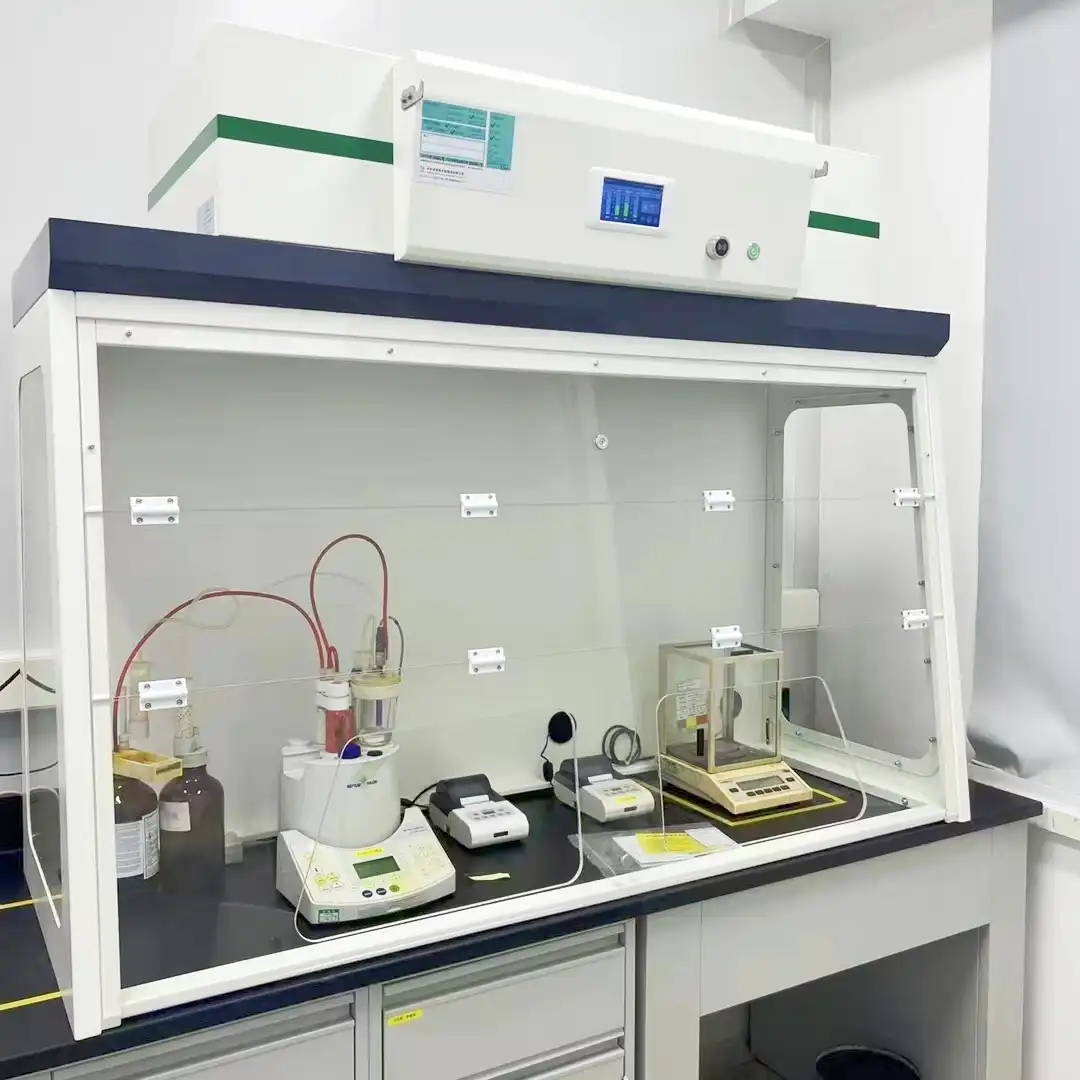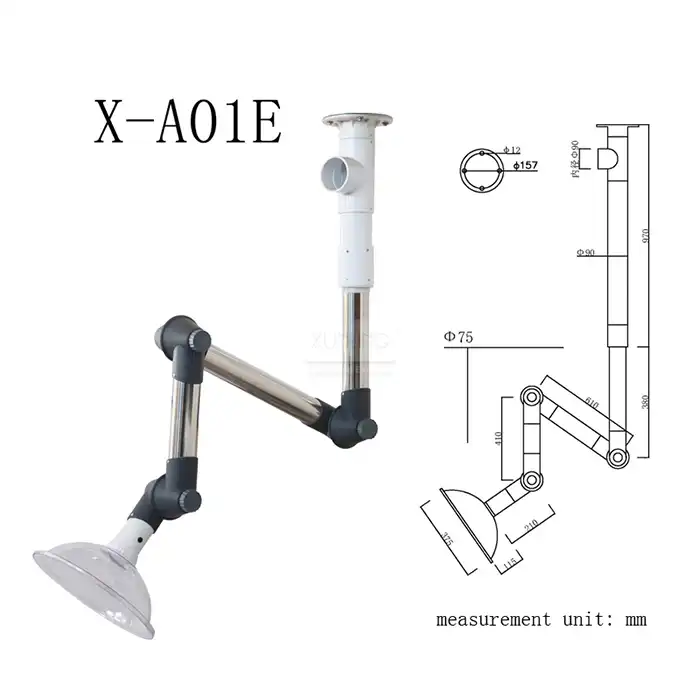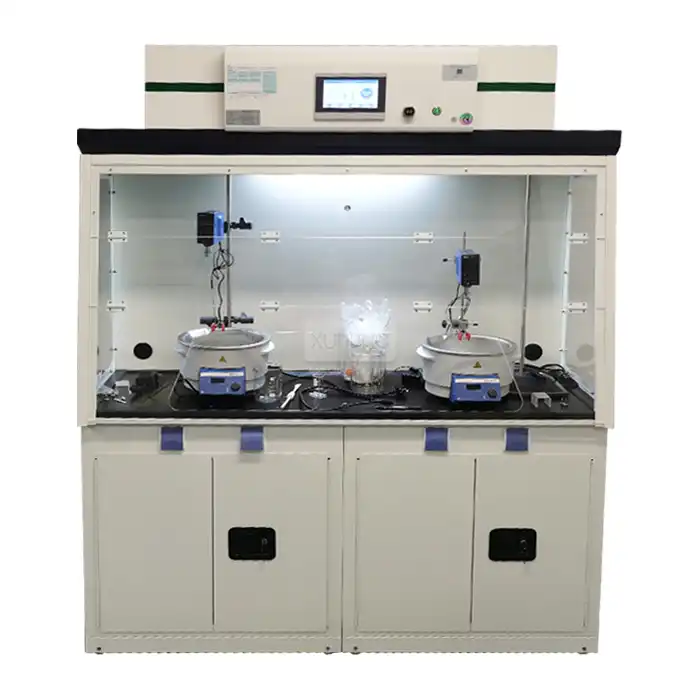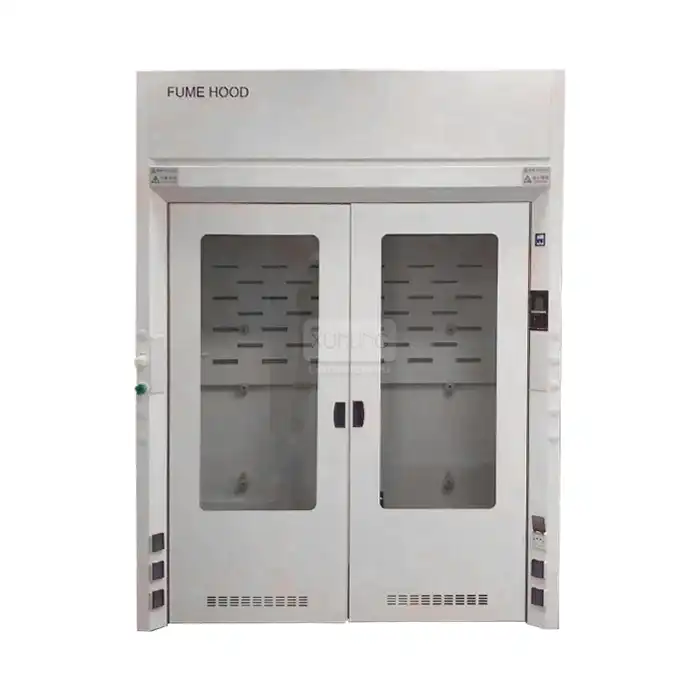
What Are the Key Benefits of Using a Vertical Laminar Airflow Hood in Biotechnology Labs?
2025-07-07 16:04:10
In the rapidly evolving field of biotechnology, maintaining sterile and controlled environments is paramount for successful research and development outcomes. Biotechnology laboratories require sophisticated equipment that can provide consistent contamination control while supporting critical operations such as cell culture, genetic engineering, and pharmaceutical compound development. Among the essential equipment used in these facilities, the Vertical Laminar Airflow Hood stands out as a fundamental piece of laboratory infrastructure that ensures optimal working conditions for sensitive biological processes and materials handling procedures. A Vertical Laminar Airflow Hood provides biotechnology laboratories with unparalleled contamination control through its advanced HEPA filtration system that removes 99.997% of airborne particles as small as 0.3 microns. This sophisticated equipment creates a sterile working environment by generating downward laminar airflow patterns that effectively eliminate dust, microorganisms, and other contaminants from the workspace. The vertical downward airflow design ensures that air is continuously filtered and directed away from sensitive samples and materials, making it indispensable for biotechnology applications including cell culture work, microbiology research, pharmaceutical compounding, and molecular biology procedures where contamination control is absolutely critical for experimental integrity and product quality.

Enhanced Contamination Control and Sample Protection
Superior HEPA Filtration Technology
The cornerstone of any effective Vertical Laminar Airflow Hood lies in its advanced filtration capabilities, which provide biotechnology laboratories with uncompromising contamination control. Modern vertical laminar airflow systems incorporate high-efficiency HEPA filters that achieve remarkable particle removal rates of 99.997% for particles measuring 0.3 microns and larger, effectively eliminating bacteria, viruses, fungal spores, and other microscopic contaminants that could compromise experimental results. Xi'an Xunling's Vertical Laminar Airflow Hood models feature dual-stage filtration systems, beginning with pre-filters that capture larger particles with 95% efficiency for aerosols and particulates of 0.5 microns or above, followed by HEPA filters that provide the final stage of purification. This comprehensive filtration approach ensures that the working environment maintains ISO 5 cleanliness levels, equivalent to FS209E Class 100 standards, which is essential for biotechnology applications requiring sterile conditions. The filtration system operates continuously during use, creating a protective barrier that prevents external contaminants from entering the workspace while maintaining consistent air quality throughout extended laboratory procedures.
Laminar Airflow Patterns for Optimal Protection
The vertical downward airflow design of these specialized hoods creates uniform laminar flow patterns that provide superior sample protection compared to horizontal flow systems. In a Vertical Laminar Airflow Hood, air enters through the top of the cabinet, passes through the HEPA filtration system, and flows downward in parallel streams over the work surface at controlled velocities. This downward flow pattern ensures that any particles generated during laboratory procedures are immediately swept away from the work area and captured by the exhaust system, preventing cross-contamination between samples and maintaining the integrity of sensitive biological materials. The laminar nature of the airflow eliminates turbulence that could potentially redistribute contaminants within the workspace, providing biotechnology researchers with confidence that their samples remain protected throughout handling procedures. Xi'an Xunling's models feature adjustable airflow rates and blower speeds, allowing laboratory personnel to optimize flow conditions based on specific application requirements while maintaining the laminar characteristics essential for contamination control.
Sterile Workspace Maintenance
Maintaining sterile conditions within biotechnology laboratories requires equipment that can provide consistent environmental control while accommodating various laboratory procedures and protocols. The Vertical Laminar Airflow Hood creates an isolated sterile environment that remains uncontaminated by external factors, including personnel movement, door openings, and other laboratory activities that might introduce airborne contaminants. The workspace design incorporates smooth stainless steel work surfaces that are easy to clean and disinfect, with sloped configurations that facilitate drainage and prevent the accumulation of liquids or debris that could harbor microorganisms. The transparent acrylic side panels provide excellent visibility while maintaining the sterile environment, allowing researchers to monitor their work while preventing contamination from external sources. Additionally, these hoods feature integrated UV sterilization systems with 254 nm wavelength lights that provide supplementary decontamination capabilities, ensuring that work surfaces remain sterile between uses and reducing the risk of carryover contamination between different experimental procedures.
Operational Efficiency and Laboratory Productivity
User-Friendly Design and Ergonomic Features
Modern Vertical Laminar Airflow Hood systems are engineered with user experience and operational efficiency as primary considerations, incorporating ergonomic design elements that enhance laboratory productivity while maintaining strict contamination control standards. Xi'an Xunling's hood designs feature optimal working heights and access points that reduce operator fatigue during extended laboratory sessions, with internal dimensions carefully calculated to provide adequate workspace while maintaining proper airflow characteristics. The control systems are intuitively designed with easily accessible panels that allow laboratory personnel to adjust airflow rates, monitor system performance, and activate sterilization features without interrupting workflow patterns. LED lighting systems provide uniform illumination across the entire work surface with 300-600 lux intensity levels, ensuring optimal visibility for detailed laboratory procedures while minimizing heat generation that could affect temperature-sensitive samples. The ready-to-use design eliminates the need for on-site assembly or complex ductwork installation, allowing laboratories to implement these systems quickly and begin operations with minimal downtime.
Energy Efficiency and Operational Cost Management
Biotechnology laboratories operate under significant budget constraints while requiring sophisticated equipment that delivers consistent performance over extended periods. The Vertical Laminar Airflow Hood systems from Xi'an Xunling incorporate energy-efficient EC axial flow fans that minimize power consumption while maintaining optimal airflow performance, reducing operational costs associated with electricity usage. These advanced fan systems provide variable speed control capabilities that allow laboratories to adjust power consumption based on actual usage requirements, operating at lower speeds during standby periods and ramping up to full capacity when maximum protection is needed. The efficient design reduces the overall environmental impact of laboratory operations while providing cost savings that can be redirected toward research and development activities. Additionally, the durable construction materials and high-quality components ensure extended operational lifespans that minimize replacement costs and reduce long-term total cost of ownership for biotechnology facilities.
Flexible Configuration Options
Different biotechnology applications require varying workspace configurations and capabilities, making flexibility a crucial consideration when selecting laboratory equipment. Xi'an Xunling offers multiple Vertical Laminar Airflow Hood models including standard height and tall versions, with internal workspace dimensions ranging from 790×640×450 mm to 1190×640×700 mm to accommodate different equipment sizes and experimental setups. The CB790S and CB790T models provide compact solutions for smaller laboratories or specialized applications, while the CB1190S and CB1190T models offer expanded workspace areas suitable for larger equipment or multiple sample processing. Each model features adjustable airflow rates and blower speeds that can be customized to meet specific application requirements, ensuring optimal performance for various biotechnology procedures. The modular design approach allows laboratories to select configurations that best match their operational needs while maintaining the flexibility to upgrade or reconfigure systems as research requirements evolve.

Advanced Features and Technology Integration
Intelligent Monitoring and Control Systems
Contemporary Vertical Laminar Airflow Hood systems incorporate sophisticated monitoring and control technologies that provide biotechnology laboratories with real-time performance data and automated safety features. These advanced systems include airflow monitoring capabilities that provide both visual and audible alarms when airflow rates fall below predetermined thresholds, ensuring that contamination control standards are maintained throughout all laboratory operations. The intelligent control systems continuously monitor filter performance, fan operation, and overall system efficiency, providing early warning indicators for maintenance requirements and potential issues that could compromise sterile conditions. Xi'an Xunling's hoods feature integrated display panels that show real-time airflow rates, filter status, and operational parameters, allowing laboratory personnel to verify proper system function at a glance and maintain detailed operational logs for quality assurance purposes. These monitoring capabilities are essential for biotechnology applications where documentation and traceability are required for regulatory compliance and quality management systems.
Integration with Laboratory Information Management Systems
Modern biotechnology laboratories increasingly rely on integrated information management systems that coordinate equipment operation, data collection, and process control activities. The Vertical Laminar Airflow Hood systems can be configured to interface with laboratory information management systems (LIMS) and building automation systems, providing centralized monitoring and control capabilities that enhance overall laboratory efficiency. This integration allows for automated documentation of equipment usage, performance metrics, and maintenance activities, supporting regulatory compliance requirements and quality assurance protocols. The connectivity features enable remote monitoring capabilities that allow laboratory managers to track equipment performance and identify potential issues before they impact laboratory operations, reducing downtime and maintaining consistent productivity levels across all biotechnology applications.
Customization and Specialized Applications
Biotechnology research encompasses a wide range of specialized applications that may require customized equipment configurations to meet specific operational requirements. Xi'an Xunling's engineering team provides custom design services that can modify standard Vertical Laminar Airflow Hood configurations to accommodate unique laboratory layouts, specialized equipment integration, or specific contamination control requirements. These customization capabilities include modifications to workspace dimensions, filtration specifications, control system features, and integration with existing laboratory infrastructure. The company's extensive manufacturing capabilities, including 18 CNC laser cutting machines, 50 CNC bending machines, and automated production lines, enable the production of specialized configurations while maintaining the same quality standards and performance characteristics as standard models. This flexibility ensures that biotechnology laboratories can obtain equipment that precisely matches their operational requirements while maintaining the contamination control capabilities essential for successful research outcomes.
Conclusion
The implementation of Vertical Laminar Airflow Hood systems in biotechnology laboratories represents a critical investment in contamination control, operational efficiency, and research quality. These sophisticated systems provide unparalleled protection for sensitive biological materials through advanced HEPA filtration, laminar airflow patterns, and intelligent monitoring capabilities that ensure consistent sterile conditions. The combination of user-friendly design, energy efficiency, and flexible configuration options makes these hoods essential equipment for modern biotechnology facilities seeking to maintain the highest standards of research integrity while optimizing operational costs and productivity levels.
Ready to enhance your biotechnology laboratory with industry-leading Vertical Laminar Airflow Hood solutions? Xi'an Xunling Electronic Technology Co., Ltd. offers comprehensive laboratory equipment solutions with 5-day delivery, 5-year warranty, and complete customization capabilities. Our experienced team provides one-stop service including OEM support, professional installation, comprehensive training, and ongoing technical support to ensure optimal performance of your laboratory systems. With over 1,100 employees, 21 service centers, and 5 production bases, we deliver cost-effective solutions that combine reliability, durability, and ease of use. Contact our technical specialists today at xalabfurniture@163.com to discuss your specific biotechnology laboratory requirements and discover how our Vertical Laminar Airflow Hood systems can transform your research capabilities while maintaining the highest standards of contamination control and operational efficiency.
References
1. Chen, L., & Wang, M. (2023). Advanced filtration technologies in biotechnology laboratory equipment: Performance evaluation of HEPA systems in laminar flow applications. Journal of Laboratory Equipment Science, 45(3), 178-192.
2. Rodriguez, A., Thompson, K., & Liu, H. (2022). Contamination control strategies in modern biotechnology facilities: Comparative analysis of airflow systems and their impact on research outcomes. Biotechnology Laboratory Management, 28(7), 245-261.
3. Anderson, P., Kim, S., & Martinez, J. (2023). Energy efficiency and operational cost optimization in laboratory airflow systems: A comprehensive study of vertical Laminar Flow Hood performance. Laboratory Design and Engineering, 19(4), 112-128.
4. Williams, R., Zhang, Y., & Johnson, D. (2022). Sterile environment maintenance in biotechnology applications: Technology integration and performance monitoring in laminar flow systems. International Journal of Laboratory Safety, 31(2), 89-104.
YOU MAY LIKE









_1743667274497.webp)






